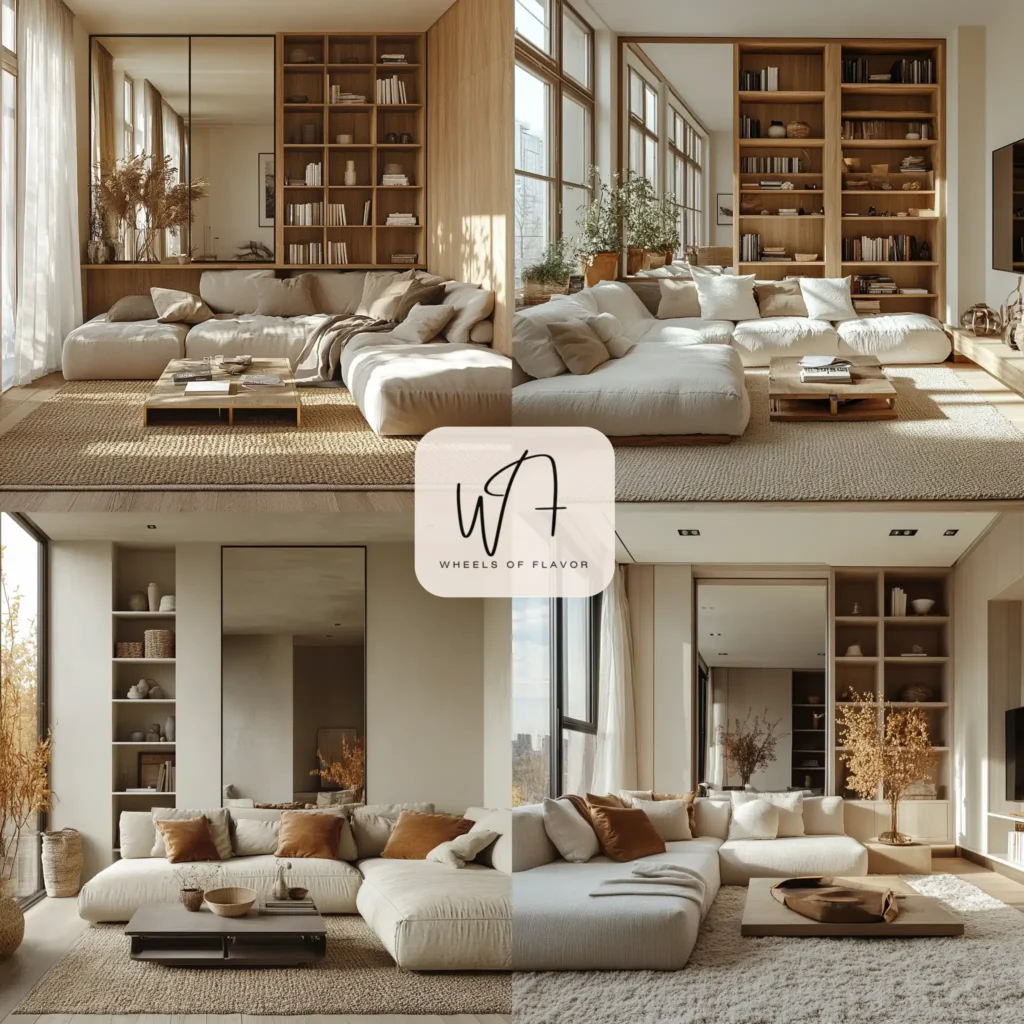Functional room configurations are the cornerstone of creating spaces that are both practical and aesthetically pleasing. Whether you’re redesigning a small apartment or optimizing a spacious home, the right layout can maximize space, enhance comfort, and elevate your living experience. In this article, we’ll explore 17 innovative ideas to help you achieve functional room configurations that suit your lifestyle, with tips to ensure every square foot works harder for you.
Table of Contents
Why Functional Room Configurations Matter
A well-thought-out room configuration goes beyond arranging furniture. It’s about creating a space that supports your daily activities, promotes efficiency, and feels inviting. Functional room configurations can make small spaces feel larger, improve workflow in home offices, and create cozy, clutter-free environments. By prioritizing purpose and flow, you can transform any room into a space that works seamlessly for you.
For inspiration on room-specific layouts, check out our room-specific decor blog for tailored ideas.
Key Principles of Functional Room Configurations
Before diving into specific ideas, let’s cover the core principles of designing functional room configurations:
- Purpose: Define the room’s primary function (e.g., sleeping, working, entertaining).
- Flow: Ensure easy movement with clear pathways.
- Storage: Incorporate smart storage to reduce clutter.
- Flexibility: Use adaptable furniture for multi-purpose spaces.
- Scale: Choose furniture that fits the room’s size.
These principles will guide you in creating layouts that are both practical and stylish. For more insights, Houzz offers expert advice on furniture arrangement.
17 Ideas for Functional Room Configurations
1. Embrace Multi-Functional Furniture
In small spaces, multi-functional furniture is a game-changer. Think sofa beds, ottomans with storage, or foldable dining tables. These pieces allow you to switch between functions, making your room configuration adaptable to different needs.
2. Create Zones in Open-Plan Spaces
Open-plan layouts benefit from defined zones. Use rugs, shelves, or furniture to separate living, dining, and working areas. This approach maintains an open feel while ensuring each zone serves its purpose.
3. Optimize Corners with Built-In Storage
Corners are often underutilized. Install corner shelves or custom built-ins to store books, decor, or electronics. This maximizes space and keeps your room configuration clutter-free.
4. Use Vertical Space for Storage
In compact rooms, go vertical. Wall-mounted shelves, tall bookcases, or hanging organizers free up floor space, creating a more functional room configuration.
5. Incorporate Sliding Doors
Sliding doors save space compared to traditional hinged doors. Use them for closets or room dividers to maintain an open, airy layout.
6. Position Furniture for Natural Light
Place seating or desks near windows to take advantage of natural light. This enhances the room’s ambiance and makes it feel more spacious.
7. Choose Modular Furniture
Modular sofas and shelving units offer flexibility. Rearrange them to suit different occasions, from movie nights to hosting guests, ensuring a functional room configuration.
8. Design a Cozy Reading Nook
Dedicate a corner to a comfy chair, a small table, and a lamp. This creates a functional space for relaxation without disrupting the room’s overall layout.
9. Use Mirrors to Enhance Space
Mirrors reflect light and create the illusion of a larger room. Place a large mirror opposite a window to amplify brightness and improve the room’s functionality.
10. Prioritize Clear Pathways
Ensure at least 2-3 feet of walking space between furniture pieces. Clear pathways prevent a cramped feel and enhance the room’s usability.
11. Invest in Foldable Furniture
Foldable desks or chairs are ideal for small spaces. Tuck them away when not in use to maintain a clean, functional room configuration.
12. Create a Home Office Corner
Set up a compact desk and chair in a quiet corner. Use wall-mounted organizers to keep supplies tidy, ensuring a productive workspace.
13. Use Rugs to Define Spaces
Rugs anchor furniture and define areas in open layouts. Choose a rug size that complements your furniture arrangement for a cohesive look.
14. Opt for Transparent Furniture
Glass or acrylic furniture, like coffee tables or chairs, reduces visual clutter. This keeps the room feeling open and functional.
15. Incorporate Hidden Storage
Furniture with hidden compartments, like beds with under-mattress storage, keeps clutter out of sight. This is key to maintaining a functional room configuration.
16. Design for Accessibility
Ensure furniture placement allows easy access to doors, windows, and outlets. This improves safety and convenience in daily use.
17. Experiment with Asymmetrical Layouts
Don’t be afraid to break from symmetry. An asymmetrical furniture arrangement can create a dynamic, functional room configuration that feels unique.

Tips for Maintaining Functional Room Configurations
- Declutter Regularly: Keep only essentials to avoid overcrowding.
- Reassess Layouts: Adjust furniture placement seasonally or as needs change.
- Invest in Quality: Durable, versatile furniture lasts longer and supports functionality.
- Personalize: Add decor that reflects your style without sacrificing space.
For more decor tips, explore our blog on room-specific decor.
FAQs About Functional Room Configurations
Q: What are functional room configurations?
A: Functional room configurations are layouts designed to maximize space, enhance usability, and support the room’s intended purpose through smart furniture placement and storage solutions.
Q: How can I make a small room more functional?
A: Use multi-functional furniture, vertical storage, mirrors, and clear pathways to optimize space and create a practical layout.
Q: What’s the best way to create zones in an open-plan room?
A: Use rugs, furniture, or shelves to define separate areas for different activities, like dining, working, or lounging.
Q: How often should I update my room configuration?
A: Reassess your layout every 6-12 months or when your needs change, such as adding new furniture or adapting to a new lifestyle.
Q: Where can I find more inspiration for functional room configurations?
A: Check out our room-specific decor blog or browse Apartment Therapy for creative ideas.
Conclusion
Functional room configurations are the key to creating spaces that are both beautiful and practical. By incorporating multi-functional furniture, smart storage, and thoughtful layouts, you can transform any room into a space that works for you. Experiment with these 17 ideas, personalize your approach, and enjoy a home that’s as functional as it is stylish. For more design inspiration, visit our blog.

